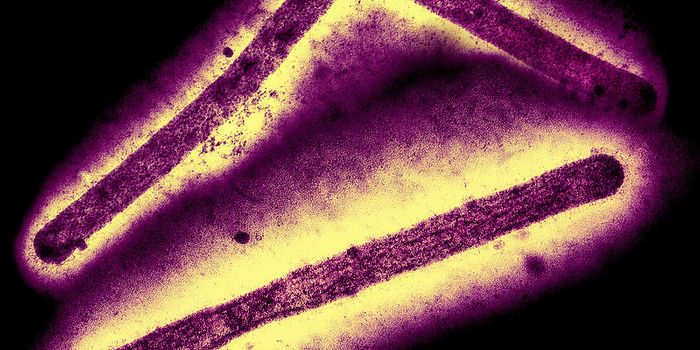A New Type of Protein Modification Called RNAylation is Dicovered
It's been generally assumed that RNA molecules and proteins have only limited or transient interactions in cells, like when proteins that can bind to RNA molecules influence the translation of genes, for example. But new research has suggested otherwise, when it comes to RNA that is produced by bacteriophages and proteins in their host cells. Bacteriophages are viruses that only infect bacterial cells, and new work has shown that bacteriophage RNA can covalently bind to bacterial proteins in a process termed RNAylation. The work has been reported in Nature.
In this work, the researchers studied the T4 phage, which infect Esherichia coli bacteria. When T4 infects E. coli, the bacterial cell dies within about 25 minutes. Because bacteriophages can be such potent bacteria killers, they have been studied as potential alternatives to antibiotics (and were used briefly, long ago before antibiotics were discovered). But if we are going to use them in the clinic, we first have to understand how they work and what they can do.
T4 has enzymes called ADP-ribosyltransferases (ARTs) that can link a molecule called nicotinamide adenine dinucleotide (NAD) with proteins. The ARTs are able to modify over 30 E. coli proteins in this way, which reprograms the entire function of the cell and kills it.
Previous work by study leader Katharina Höfer of the Max Planck Institute for Terrestrial Microbiology and colleagues has shown that there are some bacterial RNAs that are capped with NAD, called NAD-RNAs. An interview with Dr. Höfer can be seen in the video below.
This research has shown that T4 has an ART called ModB that can use both NAD and NAD-RNA as a substrate. This newly described process, in which an RNA molecule is bound to a protein, has been called RNAylation.
It seems that T4 utilizes RNAylation as part of the infection process. Mutant phages that were engineered to lack ModB are still able to kill bacteria, but much slower compared to unmodified phages. In living cells, ModB was found to link different RNAs to bacterial proteins that are involved in translation.
"RNAylation may be part of the phage's strategy. The attachment of bacterial RNA to ribosomes may stop the translation of bacterial proteins, which enables the phage to regulate the biosynthesis of its own proteins," said first study author Maik Wolfram-Schauerte.
This discovery presents new possibilities. For example, RNAylation could offer a new way to design RNA-protein conjugates that might be useful in synthetic biology. It also opens many new questions, such as what the exact mechanism behind the process might be.
"The difficulty is that the modification is quite large and complex. In the test tube, RNAylation is relatively easy to detect, but in vivo, the diversity of target proteins and RNAs makes it challenging to study. To elucidate the function of RNAylation, we need to develop new methods to study our specific questions in the living system," said Höfer.
Sources: Max Planck Society, Nature









